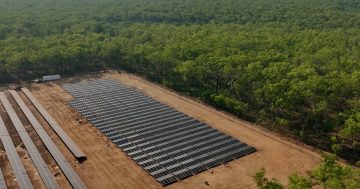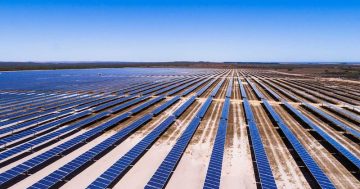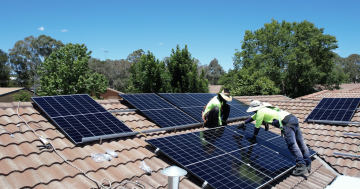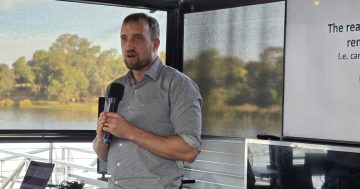Nick Baker and Andy Park* say a team of researchers just made a very unlikely breakthrough in solar power technology, which could be a game changer for renewable energy.
 It may sound like a contradiction in terms, but Australian researchers have made a major breakthrough in “night-time solar” technology.
It may sound like a contradiction in terms, but Australian researchers have made a major breakthrough in “night-time solar” technology.
In what they claim is a world first, a team of researchers from the University of New South Wales (UNSW) has demonstrated that solar power can be generated at night.
“In a sense, we’ve only been dealing with half of the opportunity, when we use photovoltaic solar cells to collect sunlight [during the day],” project leader Associate Professor Ned Ekins-Daukes tells ABC RN’s Drive.
So, what’s behind this unlikely breakthrough?
The technology
After the sun sets and the day darkens, Professor Ekins-Daukes says the potential for solar energy well and truly remains.
“We get energy from the sun — it arrives, it warms up the Earth but then the Earth actually radiates the exact same amount of energy back out into space,” he says.
“As the energy flows from the Earth’s surface … [there is a] thermal emission out into the universe that we can tap.”
Professor Ekins-Daukes and his team contend that if the flow of this radiant heat could be tapped by a power cell device and converted into electricity, there’s “a large and unused spectrum of potential power to be exploited.”
So, in a new study published in ACS Photonics, the team used a thermoradiative diode (a semiconductor sensor found in existing technologies like night-vision goggles) to capture photons leaving Earth along the infrared spectrum and converted them into electricity.
“What you’re doing is interrupting that flow of radiant heat, which is released every night out into the universe anyway, and tapping off a little bit of electricity from that,” Professor Ekins-Daukes says.
He says what’s “really exciting” is the technology “allows us to generate electricity at night, just from the cold night sky.”
What does it mean?
Australia is one of the world’s biggest adopters of rooftop solar.
Since 2001, the number of customers with solar panels has ballooned to more than 3 million.
And in 2021, there was a record uptake of more than 3,000MW of rooftop solar installed by Australian householders.
Professor Ekins-Daukes stresses this new “night-time solar” technology is still very much in its early days.
“We’ve just demonstrated that this is possible … Right now, the device we’ve made is relatively low power.
“[But] this is to be expected when you’re at the very early stages,” he says.
“The amount of energy produced was only extremely small — roughly equivalent to 1/100,000th of a solar powered cell.
“But the team argues that it is the “proof of concept that is big.”
“The question here for the thermoradiative diode is how can we get from this scientific demonstration, through to scaling the manufacturing to a level where we could get the cost down.
“And that really depends on how engaged industry can be,” Professor Ekins-Daukes says.
“It will take some time … And I have to be honest, we need to find some new materials to achieve [widespread use].”
But he says, in the future it may be possible to combine photovoltaic devices, or the solar panels widely in use today, and the thermoradiative diode for “night-time solar” power.
“You could have a panel that generates power during the day, but then could also power the other items that are still running in your house at night.”
*Nick Baker is a digital journalist and producer. Andy Park is an Award-winning broadcaster and journalist.
This article first appeared at abc.net.au










